Harpo’s Bubbles
The empty, the transparent, the unresolvable, the stacked-up, and the lit
Wayne Koestenbaum
Dream: I tried to explain the meaning of Heidegger’s “Da-sein” to my students. I said, “God didn’t create man. Man was there, and he felt invented; he needed to describe his sensation of being-called-into-existence.” A skeptical student, who planned to commit suicide tomorrow, scowled.
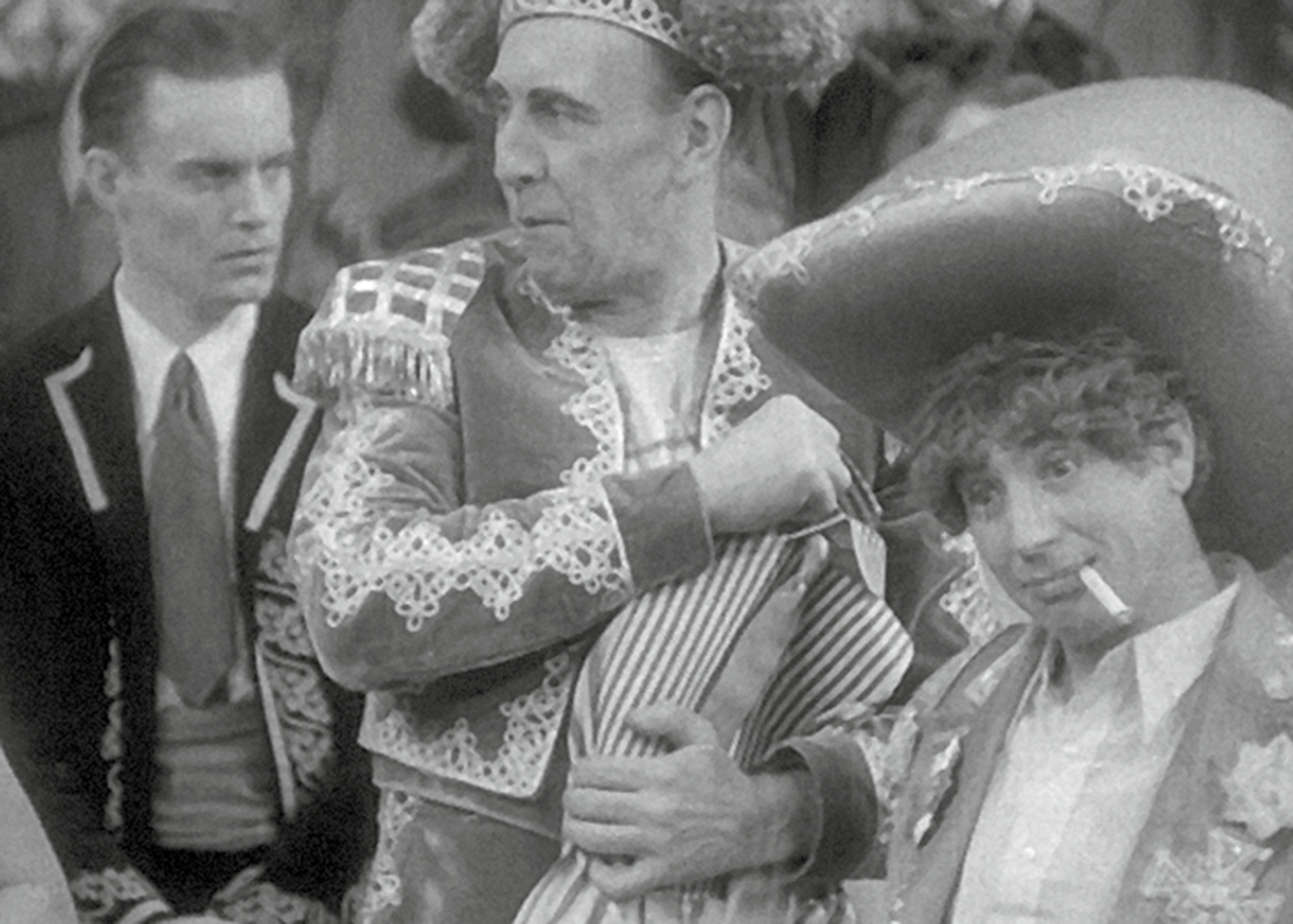
How to describe this home-region? Harpo’s gaze always wants to deviate toward that neutral destination, a corner of truce, requiring no eye contact. The comic height difference between Harpo and antagonist (actor Basil Ruysdael) paradoxically favors the shortie: knowing his smallness, he can make use of it. Basil may be tall, but Harpo, undeterred by his own apparent insignificance, dominates with sombrero and cigarillo.
He inconspicuously inserts a bubble in his mouth (I notice only because I’m advancing frame-by-frame); he blows the bubble, which, more Bazooka than smoke ring, steers Harpo back to playland, away from nicotine adulthood.

Observe Harpo’s oral inconsequence: while Basil sings, out Harpo’s mouth the compensatory gum-globe protrudes, explanatory as a cartoon’s “thought bubble.” Harpo looks downward at the sphere—a mini-artwork—he happily blows. He looks like an entranced boy in a Chardin painting (Boy Blowing Soap Bubbles)—an image of suspended time, of art’s effort to deter movement by making material interventions (bubbles, paint-marks) that seem insubstantial but that convey, in their ephemerality, a buried power. A bubble is the extent of Harpo’s accomplishment, and it is, I believe, monumental.
Margaret Dumont tells the butler to take Harpo’s hat and coat, and the butler complies, in the process removing everything but hot pants, tank-top, hat, and shoes. Harpo’s near-nakedness has a Ziegfeld Girl’s will to charm the audience, and a baby’s absorbed purposelessness.
And yet Harpo finds magical peace with his smallness; self-contained, he responds to insults by ricocheting between men and by substituting plasticity for solidity. Lacking comportment, height, speech, and membership in the senate of the strong, he bounces, slides, floats, expands, hops, and subsides; like soap bubbles in the art of Joseph Cornell (or the aforementioned Chardin), Harpo performs the role of the evanescent, the iridescent, the quivering, the misleading. His insufficiencies, reinterpreted as metaphysically resonant, serve as magnification procedures.

The douche or enema looks like a soap bubble; a black gumball has replaced his penis, which, not hidden in underpants, blossoms into a round demon that doesn’t distress him.
The last time I saw a douche was in the crawl space beneath my parents’ bathroom sink. Was it a douche or a syringe? Shiny or matte? Rubber or plastic? I admired its pouch, flat as a gin flask, and its status as out-of-bounds treasure, without a revealed function. I presumed that my mother owned it, and that it had a secret, aristocratic relation to her body, which exacted obediences from tucked-away objects.
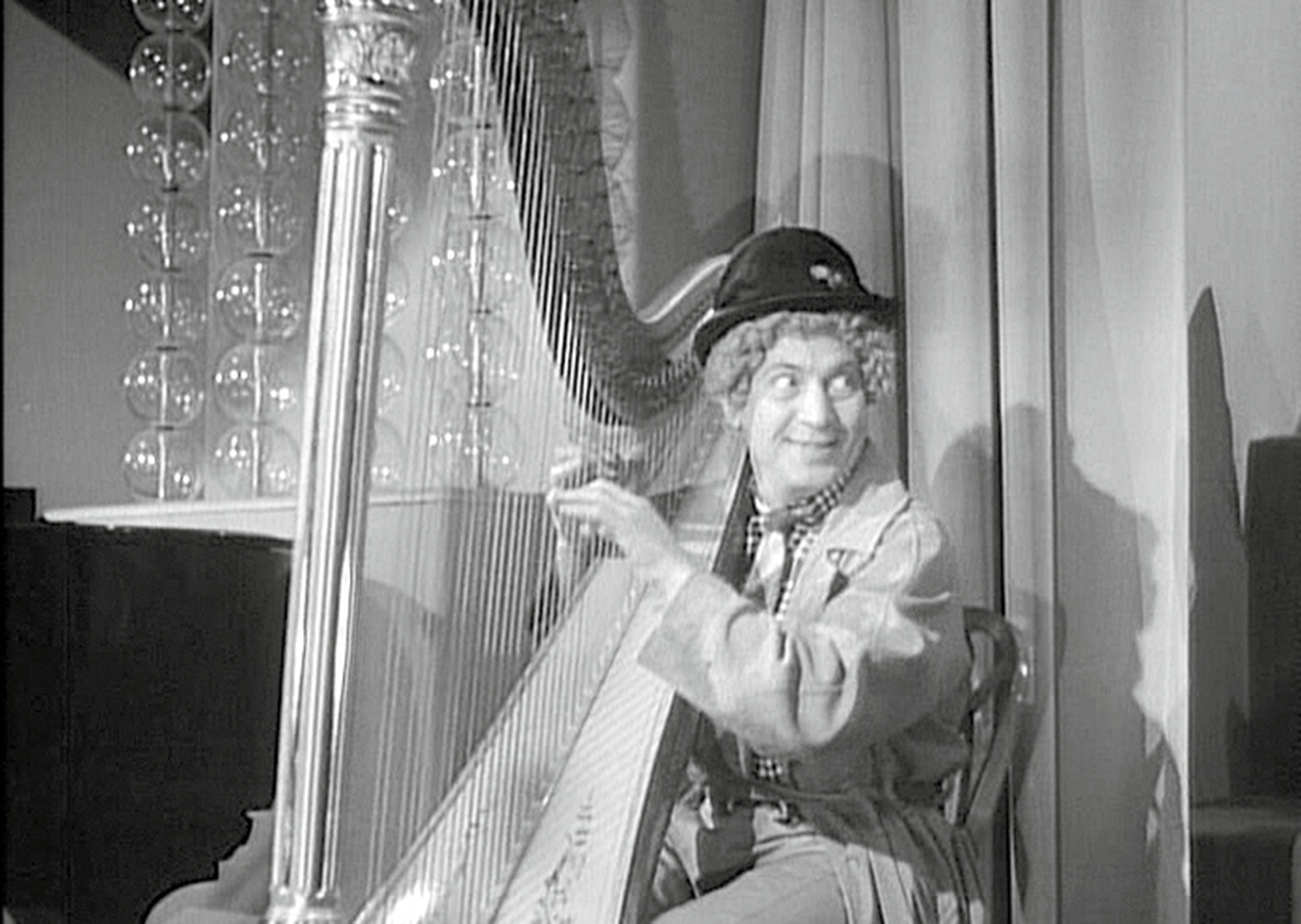
Glass gives us a lesson in how to read his singularity and solitude; decor annotates him. Theorem: inanimate surfaces, whether textured or shiny, in the vicinity of stars, point out soulful dimensions of abstractions like plural, singular, alone, molten, shining, broken. Glass balls demonstrate that Harpo is intact and unbreakable, but also that he holds court over the empty, the transparent, the unresolvable, the stacked-up, and the lit.
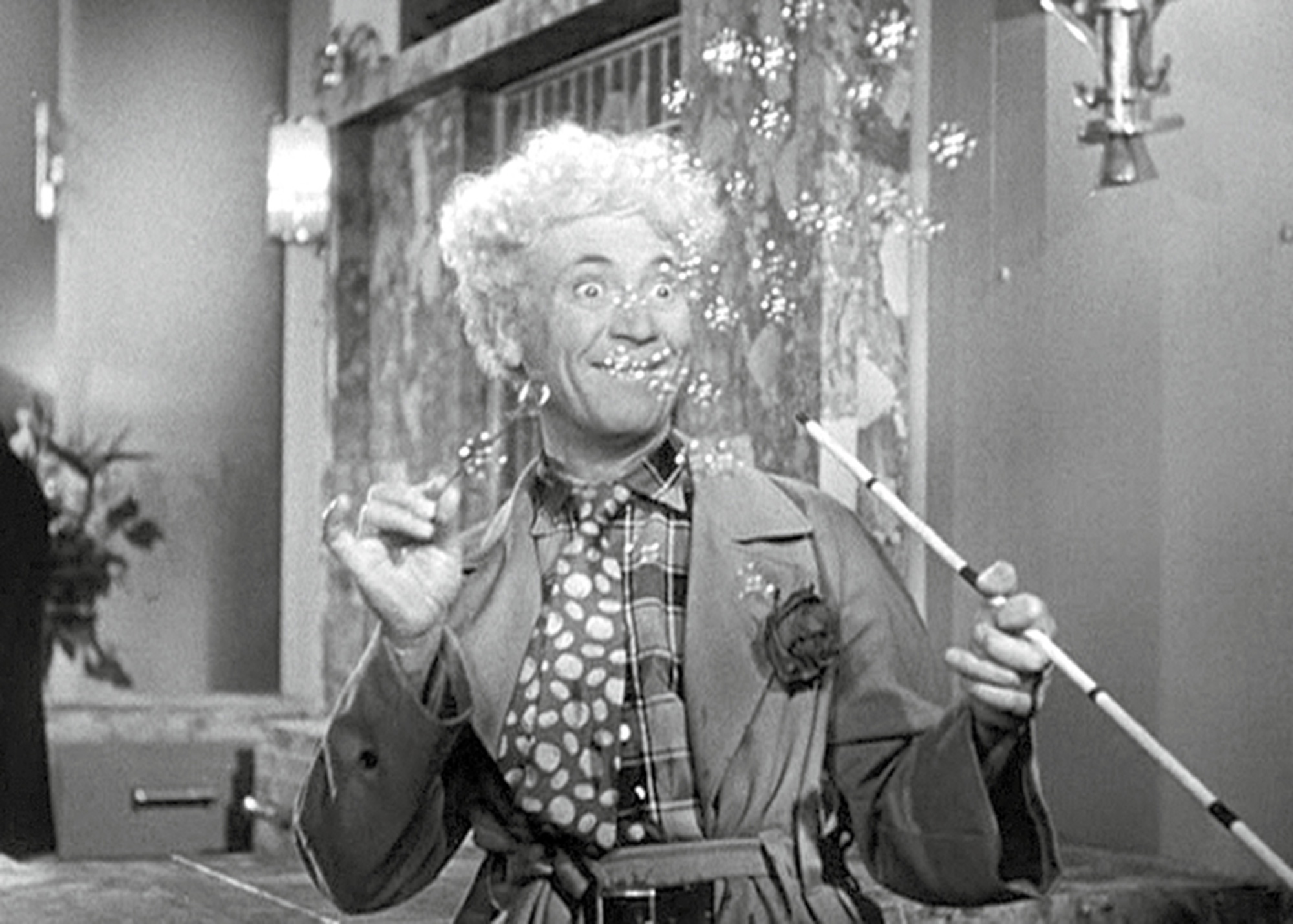
With crooked pinkie, fey Harpo appreciates his own bubbles—inane effluvia. Note his cigarette holder’s multiple extensions, one penis piled on top of another, an accretive Eiffel Tower. Harpo fills up space with more, more, more. He crowds space with the same. Bubbles have no content. Harpo has no content. He simply takes up space; he occupies without dominating. One would never call Harpo imperialist, though he advances, he annexes. He does so in sly, bubble-making fashion, with slippery legerdemain. He barks at the bubbles and tries to bite them. He wants to eat the inedible. But he treats hunger as a comic fact, rather than as a source of melancholy. (No more verdicts!)
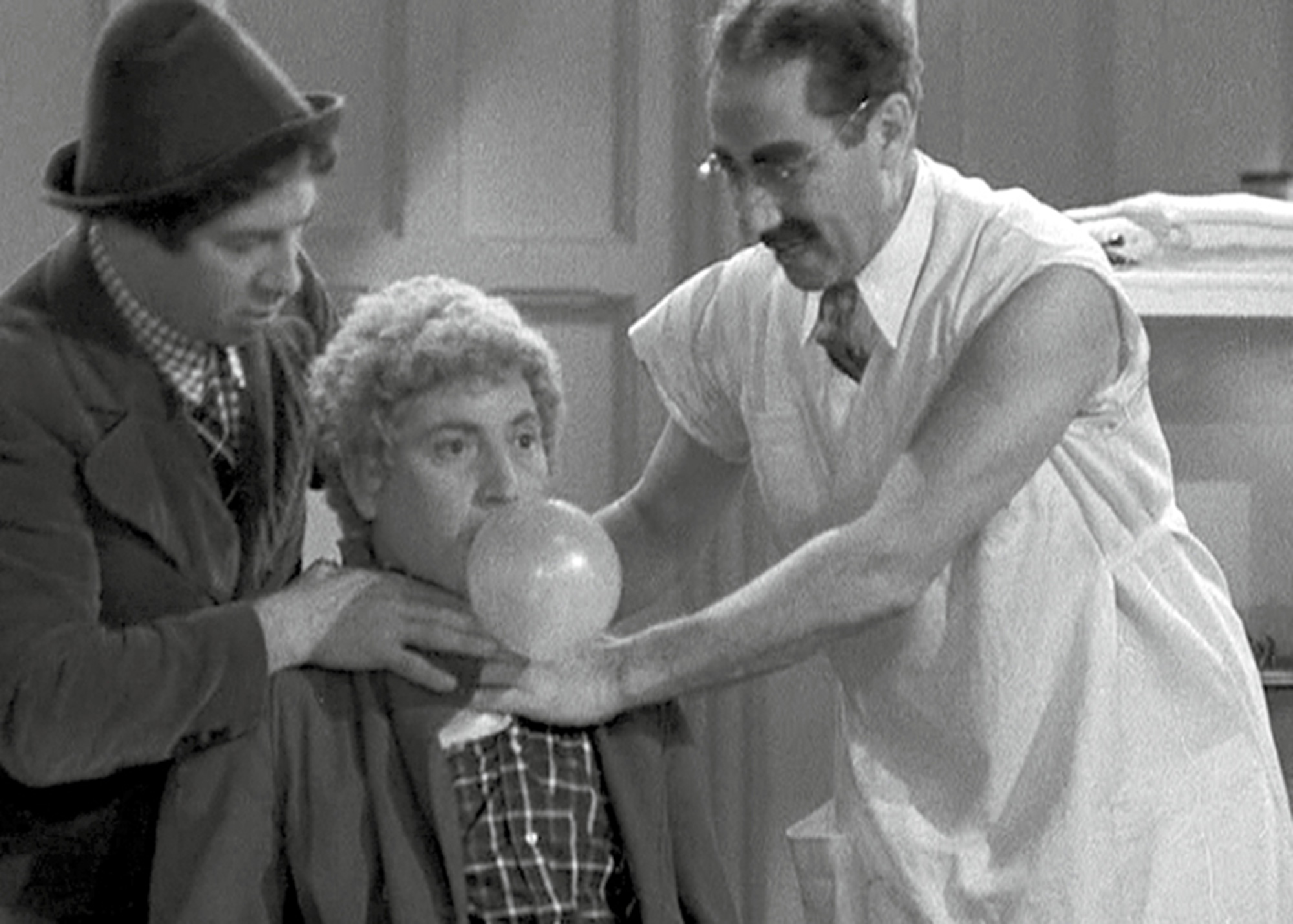
Chico and Groucho put their hands on his throat to preserve the fully blown balloon’s dimensions. Sealing off Harpo’s head, they express fratricidal willingness to decapitate. Harpo bends down, flaunting his curly pate. He wants to cauterize the balloon’s umbilicus, but also to become the Inanimate.

Witness the fascinated mouth and gaze, Harpo fascinating us, showing himself fascinated, fastened into fool-identity: I’m me, I’m on the horse, I can’t help my predicament or posture. Embodiment is an ineluctability and a miracle, what Pierre Legendre calls an “inestimable object of transmission”: also inestimable is Harpo’s basket, revealed in jockey pantaloons, with intricate buttons at the crotch. In this flattering picture, Harpo’s waist is more cinched than anywhere in his oeuvre. Harpo, the beyond-price, the matchless, responds to the crowd’s notice by whipping the horse’s bottom.
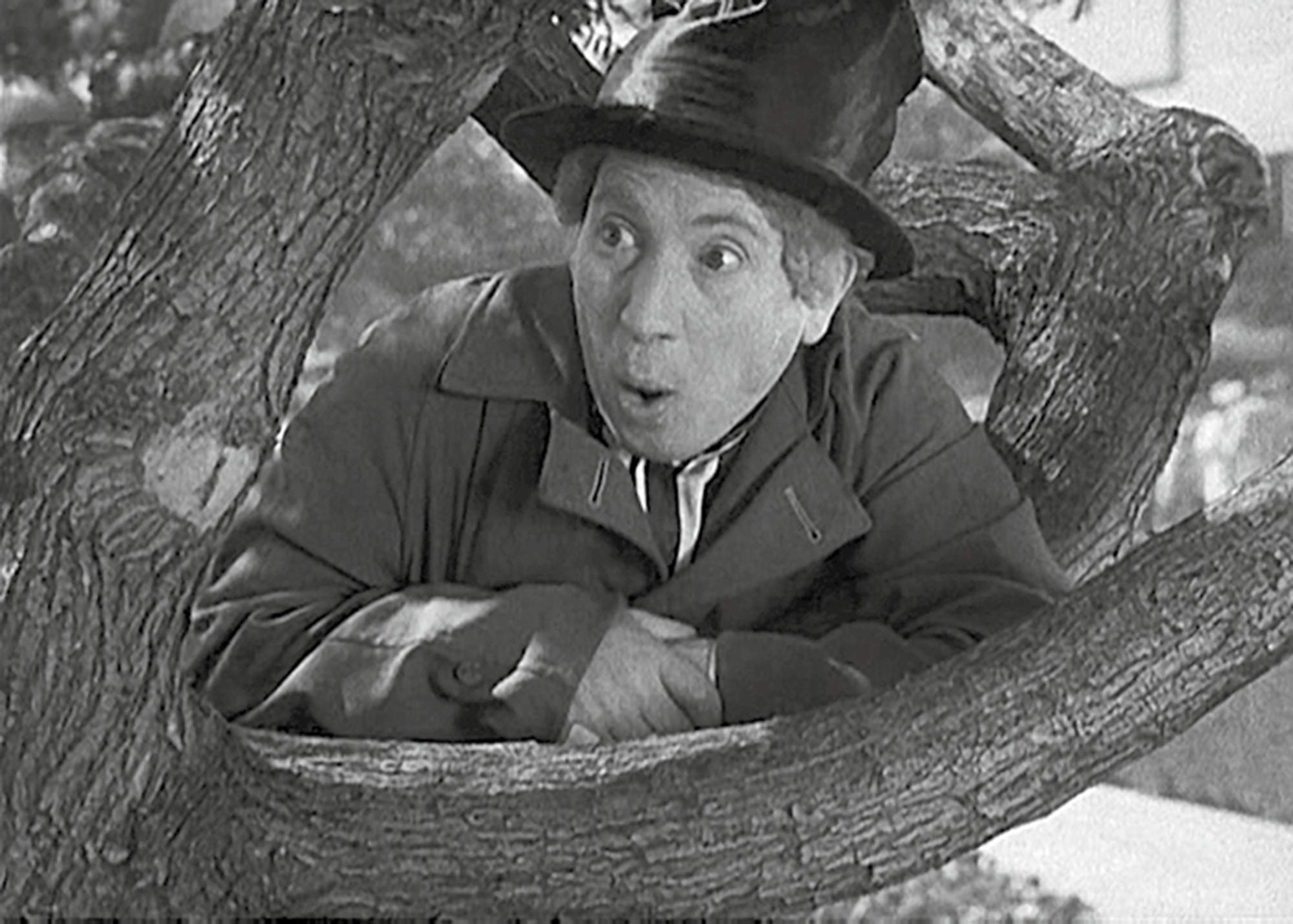
See Harpo, surprised by the fruits of audacity: Harpo, framed by tree-crook: Harpo, mimicking the bubble’s “pop”: Harpo, silently approaching sound: Harpo, alone in spectatorship (no brother nearby): Harpo, crowned with a close-up: Harpo, hands clasped, inviolable: Harpo, aware that the idyll will end.
Wayne Koestenbaum, who lives in New York City, has published twelve books of poetry, criticism, and fiction, including Best-Selling Jewish Porn Films (Turtle Point, 2006), Hotel Theory (Soft Skull, 2007), Andy Warhol (Lipper/Viking, 2001), and Cleavage (Ballantine, 2000). He is a Distinguished Professor of English at the CUNY Graduate Center, and a visiting professor in the painting department of the Yale School of Art.
Spotted an error? Email us at corrections at cabinetmagazine dot org.
If you’ve enjoyed the free articles that we offer on our site, please consider subscribing to our nonprofit magazine. You get twelve online issues and unlimited access to all our archives.